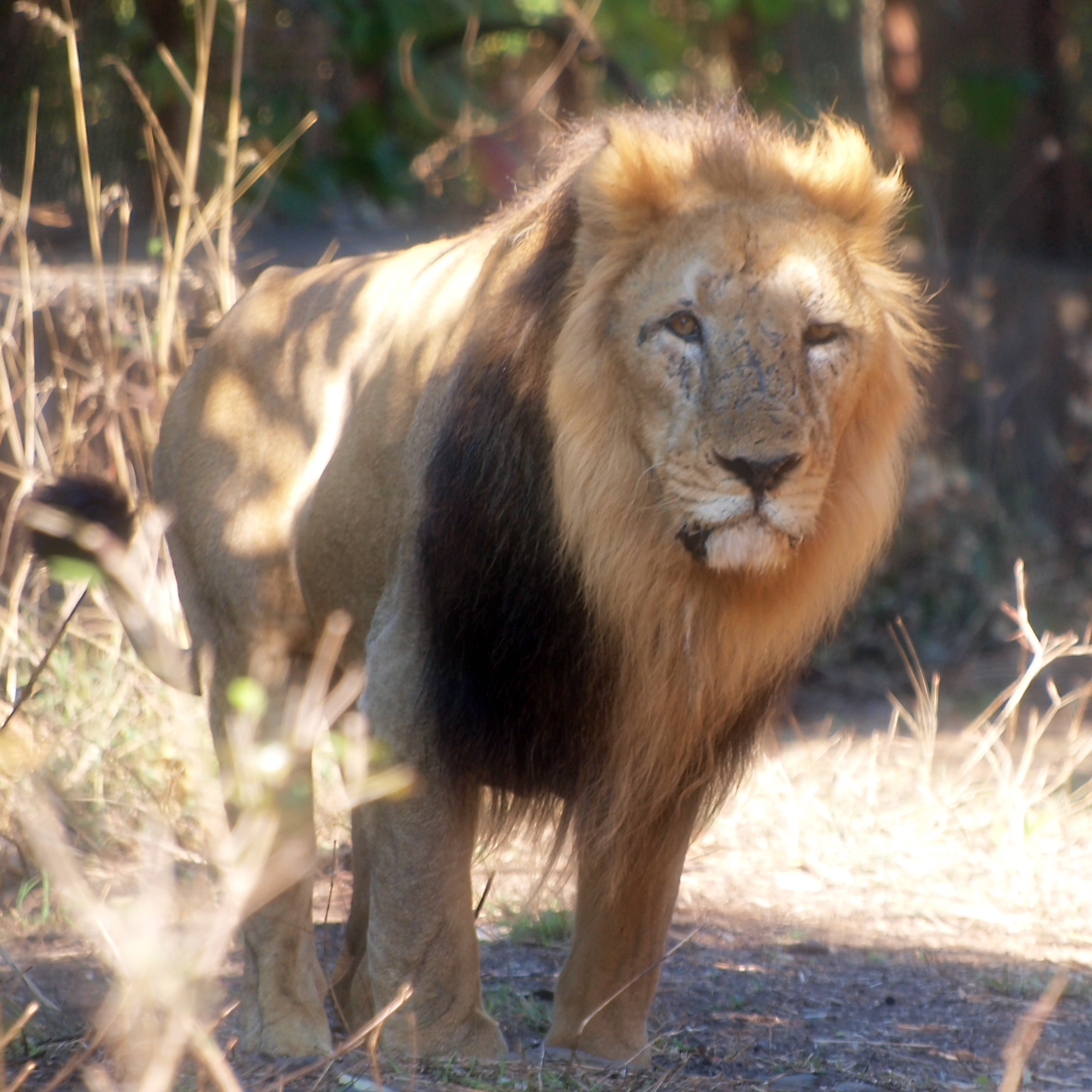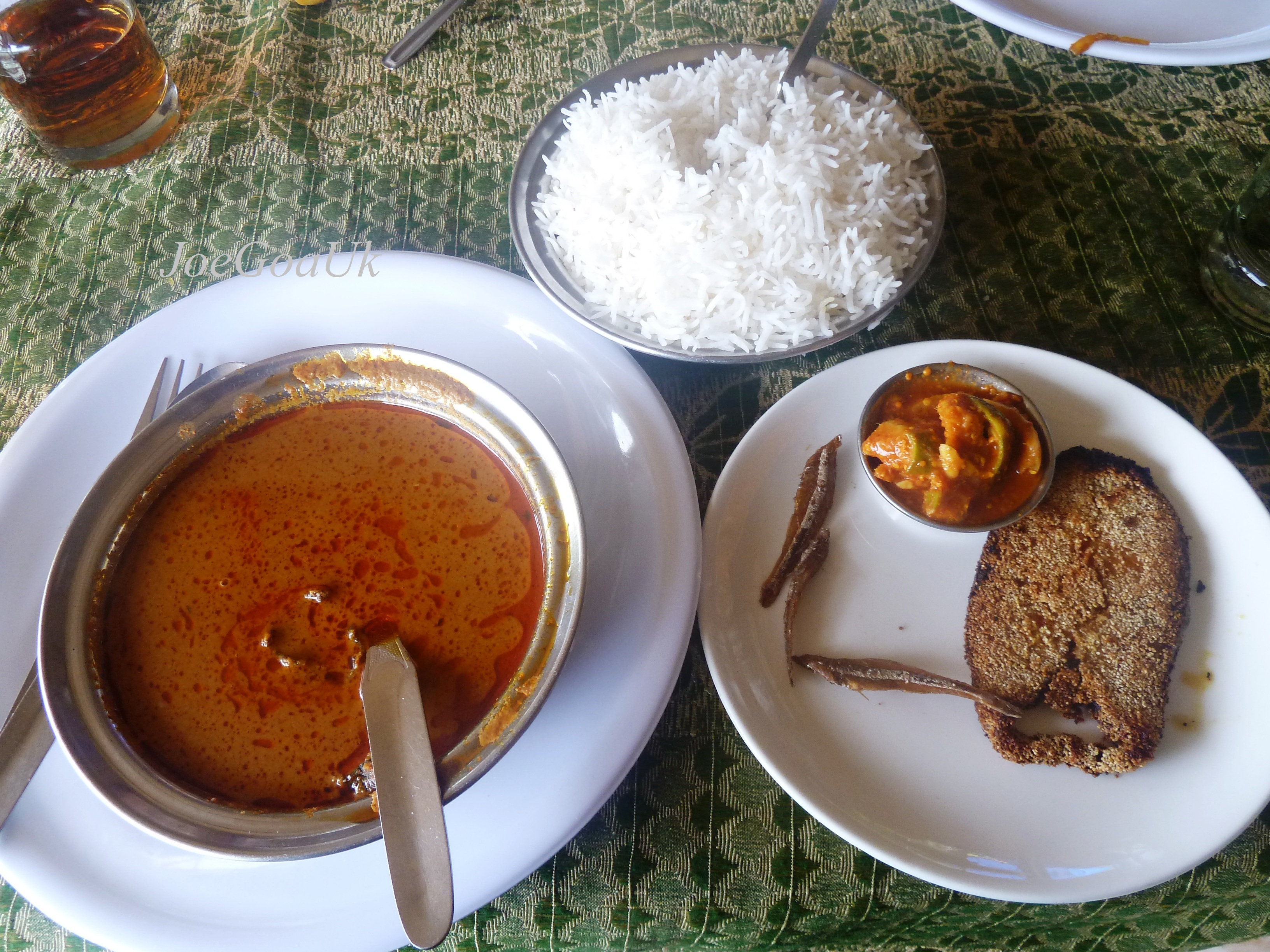Introduction: Why Gir is Special
 |
| Indian lion male at Gir National Park Shanthanu Bhardwaj, CC BY-SA 2.0, via Wikimedia Commons |
Unlike their African cousins that roam vast savannahs, Asiatic lions thrive in Gir’s dry deciduous forests and thorny scrublands.
What makes Gir so special is not just the chance to see a wild lion but the entire story of conservation and coexistence.
A century ago, Asiatic lions had nearly vanished, their numbers dropping to a dangerously low few dozen. Through strict protection, community involvement, and government initiatives, the population has steadily risen, and today Gir is celebrated worldwide as a conservation success story.
If any tourists need any help, here is the official website of the Government of India to guide the domestic and foreign tourists: India Tourism Development Corporation (ITDC)
But Gir is more than lions. It is a living, breathing ecosystem of hills, grasslands, rivers, and villages, with vibrant flora, a diversity of fauna, and a local culture that is as captivating as the wildlife. From jeep safaris to rustic Kathiyawadi meals, every aspect of a Gir visit is steeped in authenticity.
The Natural Beauty of Gir
Landscape & Ecosystem
Spread over more than 1,400 square kilometers (including the National Park and Sanctuary area), Gir is a land of contrasts. In the dry months, the terrain glows golden-brown, with sparse trees and long stretches of scrubland where herds of deer graze. During the monsoon, the sanctuary transforms into a lush paradise, with rain-fed rivers carving through verdant valleys and grass growing tall enough to hide a lion until it lifts its head.
Gir’s vegetation is dominated by teak, flame of the forest, acacia, and jamun trees. In open clearings, tall grasses sway in the breeze, providing cover for chital (spotted deer) and nilgai (blue bull). Riverine belts along the Hiran, Shetrunji, and Shingoda rivers are lined with mango, khair, and tamarind trees, while small perennial streams ensure water even in the summer.
Wildlife Beyond Lions
While lions are undoubtedly the stars of Gir, the sanctuary supports a wide range of wildlife. Leopards, though shy, are also residents here and sometimes sighted along quieter tracks. Other predators include jackals, striped hyenas, and jungle cats. Herbivores thrive: sambar, chital, nilgai, and chinkara roam the grasslands, while wild boars forage noisily in the undergrowth.
Bird lovers are equally rewarded — with over 300 bird species recorded, including crested serpent eagles, paradise flycatchers, Indian pittas, and painted storks. The Kamleshwar Dam area is particularly rich in birdlife and is also home to a significant population of marsh crocodiles basking along the water’s edge.
Together, this web of life creates a balanced ecosystem where every safari feels alive with possibility, even if a lion remains elusive for a while.
Lion-Seeing Programs: Safaris and Experiences

Female Lions at Gir Forest relaxing beside a lake
Archana96, CC BY-SA 4.0, via Wikimedia Commons
Gir Jungle Trail

Archana96, CC BY-SA 4.0, via Wikimedia Commons
The highlight of any visit to Gir is the Gir Jungle Trail safari, operated by the forest department.
Visitors are taken in open jeeps along carefully designed routes deep inside the core zone of the park.
Each safari lasts about three hours and is accompanied by a trained naturalist and driver who know the forest intimately.
Safaris are conducted in multiple time slots:
-
Early morning (around sunrise): The best time for lion sightings, as the big cats are most active during the cooler hours.
-
Late morning: Warmer but still rewarding, especially for birdwatching and herbivore sightings.
-
Afternoon: Offers chances of spotting lions resting in shade or near waterholes.
Each safari is a new adventure — sometimes you may find a lion pride lazing by the track within minutes, other times you may spend hours scanning the brush before hearing the alarm calls of deer that signal a predator’s presence. The unpredictability makes every sighting magical.
Devalia Safari Park (Gir Interpretation Zone)
 |
| Asiatic Lion, Gir Reserve Forest, India Sutariyaabhishek, CC BY-SA 4.0, via Wikimedia Commons |
For travelers short on time or visiting when the jungle safaris are closed during monsoon, the Devalia Safari Park, also known as the Gir Interpretation Zone, provides an excellent alternative.
This fenced area houses a good population of lions, leopards, and other animals in a semi-natural habitat. Safaris here are shorter but offer a high probability of seeing lions up close.
Best Practices for Safaris
-
Book permits in advance, especially during peak season (December to March).
-
Wear earth-toned clothing that blends with the environment.
-
Carry water, sunscreen, and a scarf or cap to protect against the sun.
-
Keep voices low; silence often rewards you with surprise sightings.
-
Respect the park rules — do not litter, feed animals, or get out of the vehicle.
Conservation: A Success Story with Ongoing Challenges
The story of Gir is often cited as one of India’s greatest conservation triumphs. From fewer than 50 lions in the early 20th century, the population has now crossed several hundred. This recovery is the result of strict protection, community engagement, and habitat management.
Local pastoral communities known as Maldharis still graze their cattle within designated areas of the sanctuary. Their coexistence with lions is unique; though occasional conflicts occur, compensation schemes and awareness programs have helped build a shared sense of pride in “their lions.”
At the same time, challenges remain. As the lion population grows and expands into areas beyond the sanctuary, cases of human-lion interactions increase. Conservationists emphasize the importance of habitat corridors, community participation, and responsible tourism to ensure that Gir continues to thrive without creating stress for either people or lions.
Accommodation in and Around Gir
Travelers to Gir have a wide variety of stay options, ranging from simple forest rest houses to luxurious wildlife resorts.
Forest Rest Houses & Government Lodges
These are located close to safari entry gates and provide the most authentic “in-the-forest” feel. Facilities are basic but adequate, and the atmosphere — especially at night with the sounds of the jungle around you — is unforgettable.
Mid-Range Resorts & Guesthouses
Several family-run guesthouses and budget hotels in Sasan village and nearby towns offer comfortable rooms, home-cooked meals, and easy access to safari gates. These are ideal for families and small groups looking for affordability without compromising convenience.
Luxury Eco-Resorts
For those who prefer comfort and curated experiences, Gir boasts luxury eco-lodges and resorts complete with swimming pools, spa services, and guided activities. Many of these resorts offer evening cultural programs, birdwatching walks, and Kathiyawadi dining experiences. They also arrange safaris and provide naturalists to enrich your understanding of the ecosystem.
No matter your budget, what makes staying near Gir special is the closeness to nature. Waking up to the call of peacocks, seeing langurs leap across trees near your room, or listening to the distant roar of a lion at night — these are experiences that remain etched in memory.

Famous Gujarati Vegetarian Dish
Nvthchester, CC BY-SA 4.0, via Wikimedia Commons
Local Food: A Taste of Gujarat
Nvthchester, CC BY-SA 4.0, via Wikimedia Commons
A trip to Gir is incomplete without indulging in the flavors of Kathiyawadi and Saurashtrian cuisine. The food here is rustic, bold, and designed to suit the hot, dry climate of the region.
Kathiyawadi Thali
The centerpiece of the local food experience is the Kathiyawadi thali. This includes bajra rotla (millet flatbread), garlic chutney, sev tameta (a spicy tomato and gram-flour dish), ringna no olo (smoked brinjal mash), dal, and buttermilk. The flavors are spicy, earthy, and immensely satisfying.
Snacks and Sweets
Try local snacks like gathiya, khichu, and fafda along with a glass of masala chai. Sweets such as ghughra, laddoos, and shrikhand add a sweet finish to meals.
Coastal Influence
Because Gir is not far from the Arabian Sea, seafood is also part of the local cuisine in coastal towns like Veraval and Somnath. Fresh pomfret, prawns, and kingfish cooked with local spices are a treat for seafood lovers.
Most resorts and guesthouses near Gir serve authentic Gujarati meals, often cooked with recipes passed down through generations. Sharing a meal with a local family or in a village setting makes the experience even richer.
Getting There and Around
-
By Air: The nearest airports are at Diu and Keshod, with Rajkot and Ahmedabad providing larger connections.
-
By Rail: Junagadh and Veraval railway stations connect Gir to major cities in Gujarat.
-
By Road: The sanctuary is well connected by highways, and buses, taxis, or self-drive cars are common options.
Once inside Gir, safaris are strictly organized by the forest department. Independent driving is not allowed in the park, ensuring both visitor safety and animal protection.
Best Time to Visit
-
Winter (November to March): Pleasant weather, ideal for safaris.
-
Summer (April to June): Hot, but great for lion sightings as animals gather near water sources.
-
Monsoon (July to September): The park is closed for jungle safaris, but Devalia Park may remain open. The landscape is lush, but sightings are fewer.
Responsible Tourism in Gir
To keep Gir thriving, responsible travel is essential:
-
Book only through official safari systems to prevent over-tourism.
-
Support eco-friendly lodges and buy from local artisans.
-
Never pressure guides to break rules for closer sightings.
-
Educate yourself and others about the conservation challenges facing lions and the communities around Gir.
Sample Itinerary
Conclusion: The Soul of Gir
Gir is not just a tourist spot — it is a living symbol of hope. To see a lion in its natural home, with golden light filtering through teak trees, is to witness resilience and beauty combined. Yet the true charm of Gir goes beyond lions: it is in the Maldhari herders leading cattle at dawn, the earthy flavors of millet rotla and garlic chutney, the sight of crocodiles basking at Kamleshwar, and the thrill of hearing peacocks call as the sun sets over the sanctuary.
A visit to Gir leaves you humbled, inspired, and deeply connected to the idea that humans and wildlife can indeed share space if respect and care guide the way.
Plan your trip to Gir National Park (Sasan Gir), Gujarat: discover its landscapes, lion-seeing programs (jeep & Devalia safaris), where to stay (from forest rest houses to luxury lodges), and the best local Kathiawadi and coastal cuisine.







